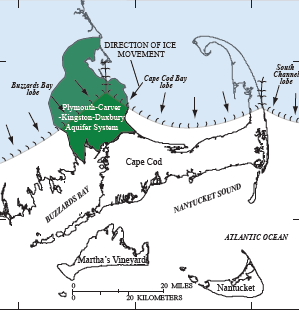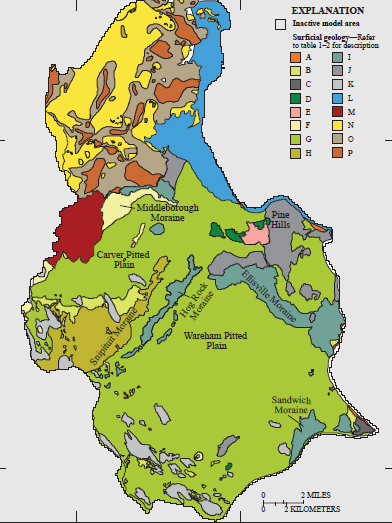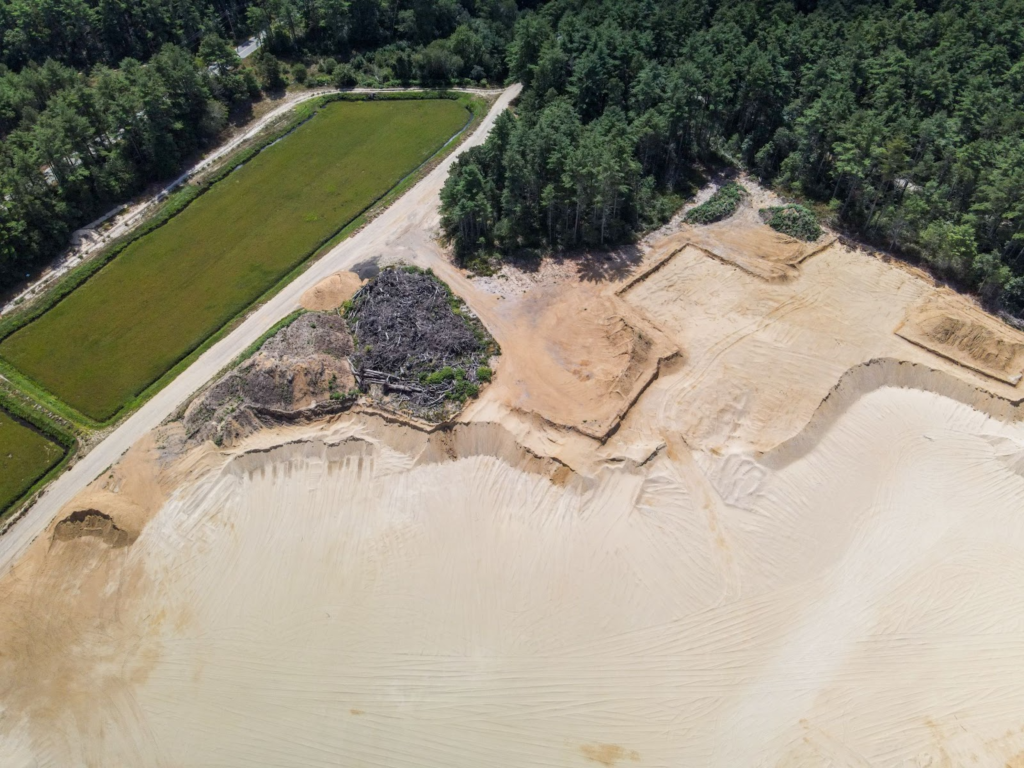Up until approximately fourteen thousand years ago, at the end of the last Ice Age, Southeastern Massachusetts was covered in glaciers. As the ice sheets from the Wisconsin glaciation retreated, they deposited sediments all across Southeastern Massachusetts, in the form of sand, gravel, and glacial till.

The glaciers left behind four main deposits: till, fluvial outwash (sand), ice contact sediments and lacustrine sediments. However the predominant glacial sedimentary deposit was fluvial outwash, which created large glacial outwash plains, as you can see in this graphic from the USGS:

The large green area on this map is land in Southeastern Mass that is covered in medium to coarse sand, with hydraulic conductivity of 100 – 150 ft/day.
That sand, along with the other glacial sediments, such as gravel and till, composes the matrix of the Plymouth-Carver Sole-Source Aquifer, which supplies drinking water to over 200,000 people in Southeastern Massachusetts across seven towns.

The clean sand and gravel underneath our feet has several environmental benefits including water filtration and wetland creation. Sand is a critical component of any water filtration system. The sand that overlays Southeastern Massachusetts acts as a physical filter for our aquifer. It removes suspended particles from the recharge water. Bacteria also sorbs to sand grains, forming bacterial mats. Sand forms a tortuous path for water to travel through before it reaches the aquifer, cleaning it as it goes. Our sandy soils form the base of wetlands, which are essential habitats for many aquatic and semi-aquatic species. Our wetlands help filter surface water as is passes through them, removing impurities and pollutants. This improves the water quality in our streams, rivers, and lakes, which in turn are directly connected to the aquifer.
The sand deposits created an ecosystem that is unique to our region. Because calcium and magnesium are easily leached out of the sand, the soils have no buffering capacity and are naturally acidic. The Pine Barrens ecosystem is a community of plants specifically adapted to the nutrient poor, acidic soils. The Pine Barrens are typically characterized by pitch pine and scrub oak forests. The region is also home to numerous rare and endangered species, including the northern red-bellied cooter and the barrens buck moth.
Today, southeastern Massachusetts is characterized by a unique combination of sandy soils, clean drinking water, rare Pine Barrens forests, wetlands, and coastal habitats. The sand supports the essential ecosystem services of our region, such as water filtration, carbon sequestration, and wildlife habitat.
